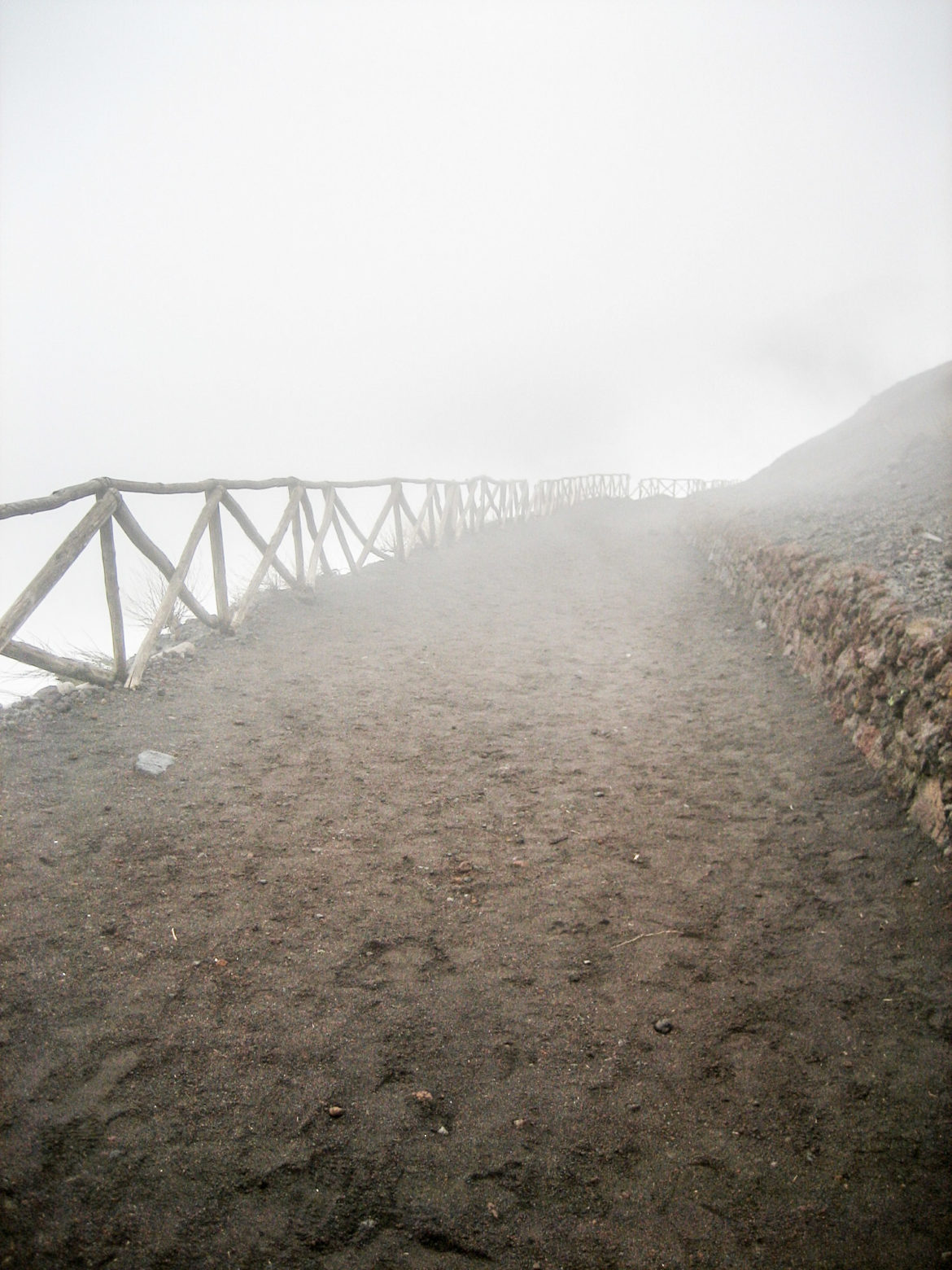Since 79 AD, Mount Vesuvius has erupted over 30 times.
In the context of 2,000 years, that number doesn’t seem like a lot. Perhaps that’s why 600,000 people continue to live in the shadow of Mount Vesuvius, considered one of the world’s most dangerous active volcanos.
The area, known as the “red zone,” is a 9-mile radius that encompasses 18 surrounding towns. When Vesuvius erupts again (experts say it’s only a matter of time), there would be little chance of survival. The last eruption in 1944 was considered minor, killing 26 people.
Studies show the next eruption will cause much more damage, potentially endangering more than 3 million people.
We were definitely pondering our own fate as we climbed up the side of the volcano. Having visited Pompeii the day before, we didn’t want to end up immortalized in ash for all eternity.
Our half hour hike felt like we’d been dropped onto Mars. Beginning the steady incline on a path of dark gravel and rocks, we soon found ourselves in a blanket of thick fog. So thick, in fact, that we literally couldn’t see a few feet in front of us. To our left, a modest stone barricade prevented a mound of dirt from potentially starting an avalanche. To our right, a rickety wooden fence separated us from the precipitous descent below.
Except for the crunch of our shoes against the earth, the air was deathly silent.
Civilization felt a million miles away. As the fog became increasingly disorienting, our minds drifted once again to the fact that we were scaling a volcano. We also seemed to be the only people doing so. The temperature became much colder. Likely, our nerves were getting the best of us. In the eerie Twilight Zone atmosphere, we suddenly felt very small in the presence of such a powerful force of nature.
We then noticed short wooden posts, only about two feet high, connected by a thin rope. We followed the posts briefly until we realized we’d finally reached the rim. So we stood and waited. Nothing to see. Nothing to hear.
The fog drifted in and out, teasing us with obscured glimpses of the crater. Then suddenly, it all lifted. For a few seconds, the massive crater was revealed below. A gasp escape our mouths. It was difficult to gauge just how deep it was, but the bottom seemed impossibly far away. We later learn that it’s about 1,000 feet deep and 2,000 feet across.
As we stood in silence, our previous trepidation began to fade away. In its place… a peaceful serenity. What an incredibly feeling to be present on that rim. Simply being in awe of the grandiosity of Mother Nature.

